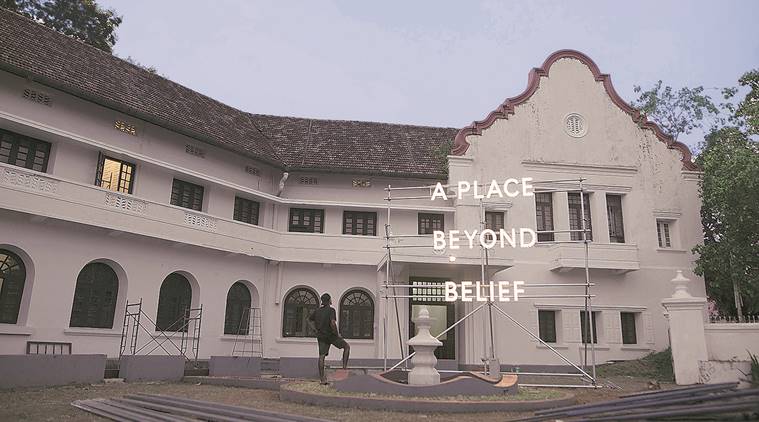Written by Vandana Kalra |Updated: January 3, 2019 8:22:56 am
‘There is not enough questioning happening’: Nathan Coley
Showing at the Kochi-Muziris Biennale, 2007 Turner prize nominee Nathan Coley talks about his influences and the need for museums to reinvent themselves

Since you first conceptualised it in 2012, A Place Beyond Belief has travelled around the world, and now you are showing it in Kochi. Could you talk about its origin. Also, does the meaning of the phrase change with its surrounding — the place or even the moment in time?
The work accrues a history and a meaning as a result of all the different places it travels. With each occasion, and the specific context in which it is shown, new topical layers of meaning are added to the work. It changes due to the location, but the location also changes with the work. In Kochi, it addresses people on the streets, outside Aspinwall House. It talks about the Biennale as ‘a place beyond belief’, and also may be touches upon the different faiths that are followed in Kerala. Right now, the work is at three places around the globe — Holland, New York and Kochi. It originated from an interview that I was listening to. Ten years after 9/11, BBC was interviewing people and among them was a woman who was recalling an incident 10 days after the attack on the Twin Towers. She was in a New York subway carriage, sitting opposite a Sikh man, towards whom everyone was exerting blatant hatred. He was just gazing at his shoes, and finally when he moved towards the exit, there was a young black woman, carrying a baby.
The man, without saying anything, pulled out money from his pocket and shoved it into the clothing of the child. The whole carriage bursts into tears and the woman narrating the story said that this was the moment where she understood that for New York to be the city that it once was and to move beyond the terrorist attacks, it had to find a place beyond belief. As soon as I heard her, I penned it down.

Several of your works are text-based. These are not words penned by you, but “come to you”.






















No hay comentarios:
Publicar un comentario